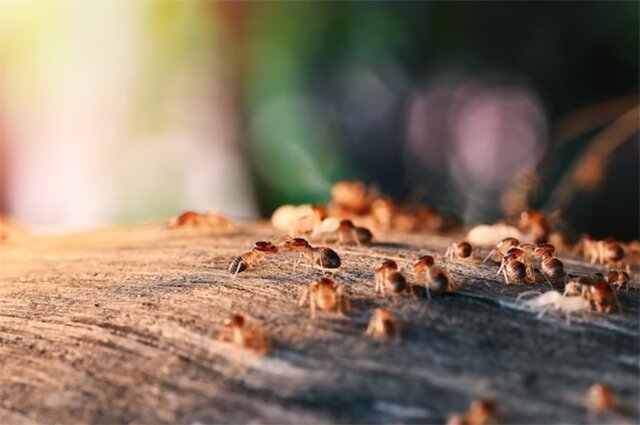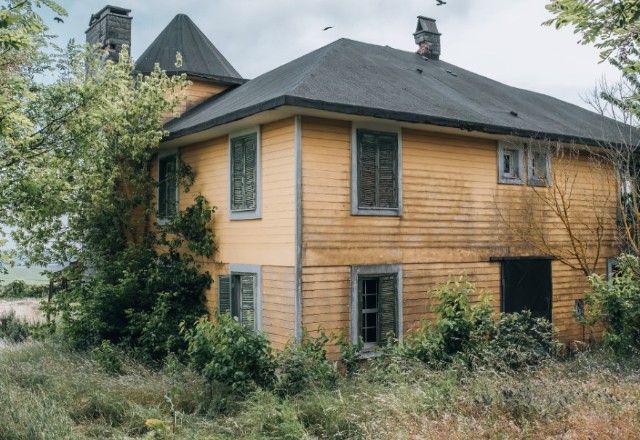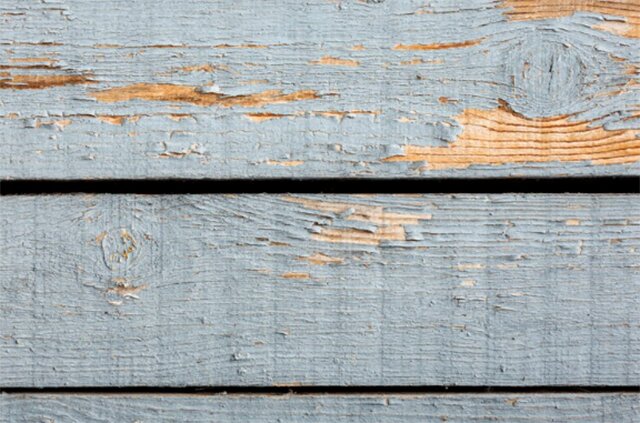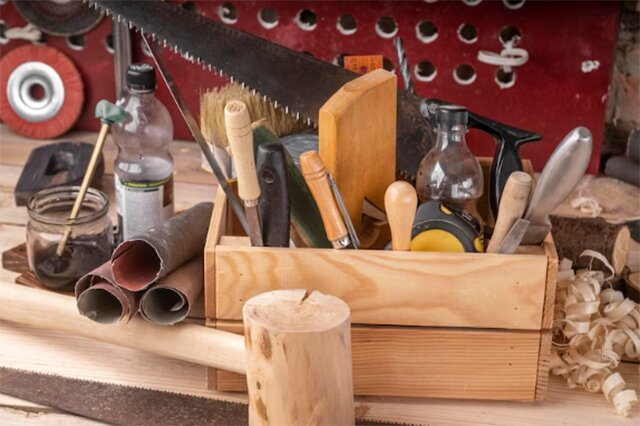Are you looking for a way to repair your Hardiplank siding without having to replace it altogether? You’ve come to the right place! In this article, we’ll show you how to repair Hardiplank siding like a pro. We’ll cover the basics of what you need to know, as well as some tips and tricks for getting the job done right. With our help and advice, you can save time, money, and effort by repairing your Hardiplank siding yourself. So let’s get started!
Disclaimer: This article is for informational purposes only and is not intended to replace professional advice. We are not responsible or liable for any damage or loss caused by the advice given in this article. If you have specific questions about repairing Hardiplank siding, it’s always best to consult with a professional. With that said, Advance Roofing LLC has been proudly serving the Spokane, WA area for many years with the highest standard of quality roofing solutions and we would be more than happy to help you with your Hardiplank siding repair needs.
What is Hardiplank Siding

Hardiplank siding, also known as fiber cement siding, is a popular exterior siding option that offers durability, longevity, and versatility. This siding is made from a blend of cellulose fibers, sand, and cement, which makes it resistant to fire, pests, and moisture damage. Hardiplank siding comes in a wide variety of styles, colors, and finishes that not only enhance your home’s aesthetic appeal but also add value to your property. Additionally, hardiplank siding can be customized to fit any architectural style and personal preference, making it a great investment for homeowners who want to transform their homes.
Benefits of Hardiplank Siding
Hardiplank siding is an incredibly popular and versatile material for homeowners and builders alike. Not only is it incredibly durable and sustainable, but it also offers excellent pest resistance, energy efficiency, and low maintenance requirements. If you are considering a siding project, it’s well worth considering Hardiplank siding as your material of choice. Here are just some of the benefits it offers:
- Durability: Hardiplank siding is incredibly strong and durable, making it an ideal choice for virtually any type of housing structure. It is resistant to weather, sunlight, and even insects, making it one of the most durable siding materials available on the market today.
- Sustainability: Hardiplank siding is made from a mixture of cement and cellulose fibers, making it a sustainable choice for homeowners looking to reduce their environmental footprint. It is also fire-resistant and non combustible, providing an additional layer of safety for your home.
- Pest Resistance: Many homeowners worry about carpenter ants and other pests that can wreak havoc on their homes. With Hardiplank siding, however, you can rest easy knowing that it is highly resistant to these types of pests.
- Energy Efficiency: Hardiplank siding is excellent at insulating your home against temperature changes, helping to keep your energy costs low. It is also designed to let moisture escape, preventing mold and mildew from forming inside your home.
- Low Maintenance: Hardiplank siding is virtually maintenance-free, requiring only the occasional cleaning with a garden hose to keep it looking great. Unlike natural wood siding, it won’t rot, warp, or crack, meaning less hassle and less expense for repairs.
- Variety of Styles and Color Options: Hardiplank siding is available in a wide variety of styles and colors, meaning you can choose the perfect look for your home that matches your personal preference and architectural style. Whether you want board siding or shingle siding, there is a Hardiplank style for you.
- 30-Year Non-Prorated Warranty Coverage: Hardiplank siding is backed by a 30-year non-prorated warranty, providing homeowners with peace of mind knowing that they are making a long-term investment into their home.
What Causes Damage to Hardiplank?
Hardiplank siding is known for its durability and low maintenance requirements, but like any material, it can be susceptible to damage over time. While Hardiplank siding is designed to resist weather, insects, and other hazards, it can still suffer damage from various sources. In this article, we will explore some of the most common causes of damage to Hardiplank siding and provide tips on how to prevent and repair them.
Carpenter Ants

Carpenter ants are a potential threat to Hardiplank siding. These pesky insects are attracted to moisture and can cause significant damage to wooden structures, including Hardiplank siding. It is crucial to identify and address a carpenter ant infestation promptly to prevent further damage to your home.
One of the signs of carpenter ant damage is small holes or sawdust near the foundation of the siding. If you notice these signs, it’s time to take action. The first step is to contact a pest control professional who can assess the situation and create a treatment plan.
Once the pest control professional has eliminated the carpenter ants, you need to remove any damaged siding. This will prevent any remaining ants from using it as a nesting site. It is essential to replace the damaged siding with new Hardiplank to ensure the structural integrity of your home.
Preventative measures are crucial to avoid future infestations. Keep vegetation away from the siding and remove any exposed wood that could attract carpenter ants. Regularly inspect the exterior of your home, looking for signs of an infestation, and address any issues promptly.
Remember to call a pest control professional if you suspect an infestation and replace any damaged Hardiplank siding.
Poor Installation and Maintenance
When it comes to Hardie board siding, proper installation and maintenance are of utmost importance. A poorly installed Hardie board can cause problems later on, including water damage, mold, and even rot. On the other hand, with proper installation, it can last for decades.
To ensure that your Hardie board siding is installed correctly, it’s crucial to hire a reputable contractor with experience in this type of work. They should follow all of the manufacturer’s instructions and guidelines to ensure that the siding is installed in a way that will provide long-term protection against the elements.
Once installed, proper maintenance is key to preventing any issues from developing. It’s essential to inspect your home’s siding periodically for signs of wear and tear. Look for any gaps or cracks, which can allow water to penetrate the siding and lead to water damage, mold, and rot.
If you notice any signs of water damage, it’s critical to address the issue immediately. Ignoring it can lead to more significant problems down the road, such as structural issues and more expensive repairs.
Regular cleaning is also essential to maintain the appearance and longevity of your Hardie board siding. Use a garden hose or pressure washer to remove dirt and grime that can build up over time. Be sure to follow all manufacturer recommendations and avoid using abrasive cleaners or tools that could cause damage to the siding.
Weathering Effects

Hardie Board siding is a highly durable and long-lasting siding material, but exposure to various environmental factors can cause weathering effects over time. One of the most prominent weathering effects is fading, which occurs due to prolonged exposure to sunlight. Fading can cause the once vibrant color of the siding to become dull and less attractive.
Another common weathering effect is chipping, which happens when small pieces of the siding break off due to impact. Chipping can be caused by hailstones, flying debris, or even the force of a lawnmower hitting the siding.
Cracking and warping are also potential weathering effects that can affect Hardie Board siding. Cracking occurs when the material becomes brittle due to prolonged exposure to low temperatures, while warping occurs when the siding material is exposed to high heat.
Finally, rotting is a severe weathering effect that can occur when moisture penetrates the siding. The cellulose fibers in the siding can absorb moisture, causing the material to break apart and rot over time.
To identify these weathering effects, you should conduct routine maintenance and inspections of your Hardie Board siding. Look for signs of fading, chipping, cracking, warping, or rotting, and address any issues immediately. By catching and addressing these issues early, you can prevent further damage to your siding and prolong its lifespan.
One of the key benefits of Hardie Board siding is its weather resistance. It is resistant to cracking, chipping, and warping, making it an excellent choice for areas with extreme weather conditions such as high winds, hailstorms, and freezing temperatures. In addition, Hardie Board siding is also highly resistant to fire, making it an excellent option for homes in wildfire-prone areas.
How to Identify Signs of Damage to Hardiplank?
Hardiplank siding is a durable and long-lasting material that is ideal for protecting your home from harsh weather conditions. However, even the most durable siding can become damaged over time due to weathering effects such as fading, chipping, cracking, warping, or rotting. That’s why it’s important to know how to identify signs of damage to Hardiplank siding so you can address any issues before they become more severe. In this article, we will discuss how to identify different types of weathering effects that can affect Hardiplank siding and what you can do to address them.
Visible Wear and Tear on the Surface

Hardiplank siding can greatly improve the appearance and durability of your home’s exterior. It is made of a mixture of cellulose fibers and cement, making it resistant to moisture and insect damage. However, over time, visible wear and tear can occur on the surface of the siding.
To address this issue, it is important to inspect your Hardiplank siding for any cracks, chips, or deep scratches that reveal the under layer or show wear and tear on the surface. These imperfections can detract from the overall appearance of your home and lead to more serious issues if left untreated.
For minor scratches, touch-up paint or color-matched caulking can be used to address the damage. This quick fix will help to improve the appearance of the siding without the need for costly repairs or replacements.
However, for more serious damage, replacing the damaged plank is recommended. This can be done by hiring a professional or by using a DIY approach. To blend the replaced plank with the existing planks, it is important to paint it with the same color and finish as the rest of the siding.
Peeling Paint or Discoloration
If you notice peeling paint or discoloration on your Hardiplank siding, it’s important to address it as soon as possible to prevent further damage and to maintain the integrity and appearance of your home’s exterior. Here are some steps to take:
Assess the severity of the peeling paint:
- If it’s a small area, you can easily scrape the peeling paint with a putty knife.
- Sand the area lightly to create a smooth surface.
- Repaint the spot with exterior acrylic paint that matches the color and finish of your Hardiplank siding.
However, if the peeling paint is more widespread:
- You may need to remove the entire section of siding that has been affected.
- Clean the surface by washing it with a pressure washer or scrubbing it with a stiff-bristled brush and water and letting it dry completely.
- Sand the surface to create a smooth base for the new coat of paint.
- Repaint with exterior acrylic paint, ensuring that the color and finish match the rest of the siding.
When it comes to discoloration:
- Use a garden hose or pressure washer to thoroughly clean the affected area.
- If the discoloration persists, scrub it with a mixture of water and a gentle cleaning solution to remove dirt or stains that may be causing the discoloration.
- Rinse the area again with a garden hose or pressure washer and allow it to dry completely before continuing with any repairs.
Cracking or Warping Due to Moisture Exposure

If you notice cracks or warping in your Hardiplank siding that are caused by moisture exposure, it’s important to address the issue promptly to prevent further damage and maintain the integrity of your home’s exterior. Here are the steps you need to follow:
Thoroughly inspect the area:
- Look closely at the affected area to identify the extent of the damage and any potential underlying issues.
- Check for signs of moisture damage and determine the cause of the problem.
Determine the extent of damage:
- If the damage is localized, you may be able to replace individual siding panels.
- If the damage is more extensive, you may need to remove larger sections of the siding and replace them.
Address underlying issues:
- Moisture damage can be caused by an array of issues such as poor gutter systems, landscaping, or improper installation. Address any underlying issues to prevent future moisture damage.
Reinstall properly:
- Proper installation and sealing techniques are crucial to avoid similar issues in the future. Ensure that the siding is installed correctly with proper sealing techniques.
By following these steps, you can address cracks or warping caused by moisture exposure in your Hardiplank siding and maintain the integrity and appearance of your home’s exterior.
Preparing for Repair Work on Hardiplank Siding
Hardiplank siding is a durable, long-lasting siding option that can enhance the appearance and energy efficiency of your home. However, like any other type of siding, it may require repair work from time to time. If you’re planning to undertake hardiplank siding repairs, it’s essential to prepare for the work properly to ensure effective and long lasting results. In this article, we’ll provide some tips on how to prepare for repair work on hardiplank siding like a pro!
Gathering the Necessary Materials and Tools

If you want to transform your home with Hardiplank siding repair, you need to have the necessary materials and tools before starting the project. This will ensure that the repair work is carried out efficiently and effectively. Here is a list of the materials and tools you need to have:
Materials:
- Hardiplank siding
- Felt
- 6d galvanized nails
- Acrylic caulk
- Drip cap
- Kick-out flashing
- Paint
Tools:
- Air compressor
- Air hose
- Caulk gun
- Chalk line
- Circular saw
- Cordless drill
- Drill bit set
- Dust mask
- Hammer
- Jigsaw
- Level
- Safety glasses
- Sawhorses
- Speed square
- Stapler
- Tape
Before starting with the repair work, ensure that you have all the materials and tools mentioned above. This will save you time and effort, and help you complete the project smoothly.
Steps for Repairing Damaged Hardiplank Siding
Hardiplank siding is a popular choice for homeowners due to its durability and low maintenance qualities. However, even the sturdiest of materials can sustain damage over time. If you have noticed any damage to your Hardiplank siding, it is important to address it promptly to avoid further issues. Here are the steps you need to take to repair damaged Hardiplank siding.
- Step 1: Identify the Type of Damage. The first step to repairing damaged Hardiplank siding is to identify the type of damage that needs to be repaired. Is it a small hole or crack, or is the siding completely destroyed? This will determine if the damage can be fixed or if the siding needs to be replaced entirely.
- Step 2: Gather the Materials and Tools. Once you have identified the type of damage, gather the necessary materials and tools. You will need Hardiplank siding, felt, 6d galvanized nails, acrylic caulk, drip cap, kick out flashing, paint, and tools like a circular saw, cordless drill, hammer, level, sawhorses, and tape. Having all the necessary materials and tools will save you time and effort and help you complete the project smoothly.
- Step 3: Clean the Damaged Area. Clean out the damaged area by removing any loose material, such as debris and broken pieces of the siding.
- Step 4: Apply the Patching Compound. Apply the cementitious patching compound to fill in any holes or cracks in the siding, making sure to smooth out the surface with a putty knife. Work in small sections, taking time to ensure that the patch is applied evenly and smoothly.
- Step 5: Let the Patch Dry. Allow the patch to dry completely before sanding it down to match the surrounding area. This will ensure that the repaired area blends in well with the rest of the siding. Sand the patch gently until it is flush with the surrounding surface.
- Step 6: Apply Touch-Up Paint. Finally, apply touch-up paint as needed to blend the repair with the rest of the siding. Paint the entire repaired area, as it is essential to ensure that the paint color matches precisely, and the repair does not stand out.
Conclusion
In conclusion, repairing Hardiplank siding is a manageable task that can be done like a pro with the right tools and materials. By following the steps outlined in this article, you can ensure that your siding looks as good as new without having to replace the entire panel. Remember to identify the type of damage, gather the necessary materials and tools, clean the damaged area, apply the patching compound, let it dry, and apply touch up paint to achieve a seamless repair. Transform your home with Hardiplank siding repair and enjoy a durable and attractive exterior for years to come.



 509-201-4190
509-201-4190
